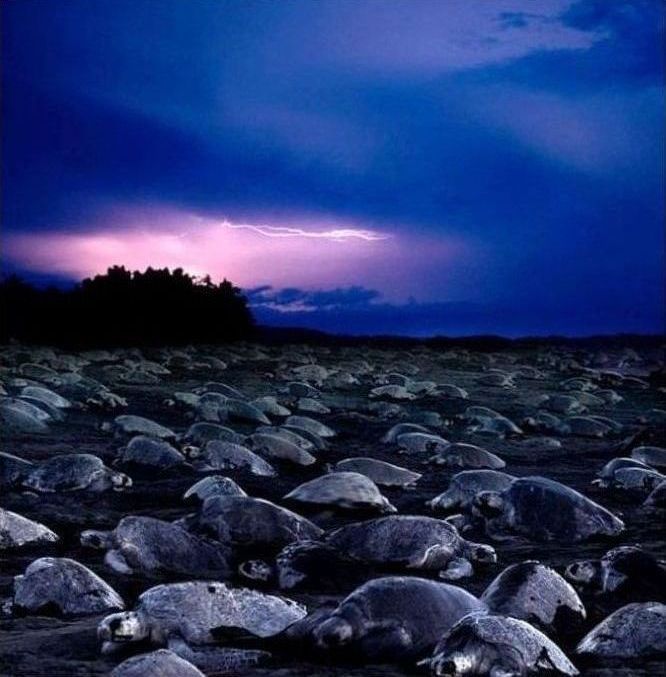Arribadas, Pacific Olive Ridley Sea Turtles Synchronised Nesting
|
The olive ridley is predominantly carnivorous, especially in immature stages of the life cycle. Animal prey consists of protochordates or invertebrates, which can be caught in shallow marine waters or estuarine habitats. Common prey items include jellyfish, tunicates, sea urchins, bryozoans, bivalves, snails, shrimp, crabs, rock lobsters, and sipunculid worms. Additionally, consumption of jellyfish and both adult fish (e.g. Sphoeroides) and fish eggs may be indicative of pelagic (open ocean) feeding. The olive ridley is also known to feed on filamentous algae in areas devoid of other food sources. Captive studies have indicated some level of cannibalistic behavior in this species.
• Threats
Known predators of olive ridley eggs include raccoons, coyotes, feral dogs and pigs, opossums, coatimundi, caimans, ghost crabs, and the sunbeam snake. Hatchlings are preyed upon as they travel across the beach to the water by vultures, frigate birds, crabs, raccoons, coyotes, iguanas, and snakes. In the water, hatchling predators most likely include oceanic fishes, sharks, and crocodiles. Adults have relatively few known predators, other than sharks, and killer whales are responsible for occasional attacks. Females are often plagued by mosquitos during nesting. Humans are still listed as the leading threat to L. olivacea, responsible for unsustainable egg collection, slaughtering nesting females on the beach, and direct harvesting adults at sea for commercial sale of both the meat and hides.
Other major threats include mortality associated with boat collisions, and incidental takes in fisheries. Trawling, gill nets, ghost nests, longline fishing, and pot fishing, have significantly affected olive ridley populations, as well as other species of marine turtles. Between 1993 and 2003, more than 100,000 olive ridley turtles were reported dead in Odisha, India from fishery-related practices. In addition, entanglement and ingestion of marine debris is listed as a major threat for this species. Coastal development, natural disasters, climate change, and other sources of beach erosion have also been cited as potential threats to nesting grounds. Additionally, coastal development also threatens newly hatched turtles through the effects of light pollution. Hatchlings which use light cues to orient themselves to the sea are now misled into moving towards land, and die from dehydration or exhaustion, or are killed on roads.
|
|









